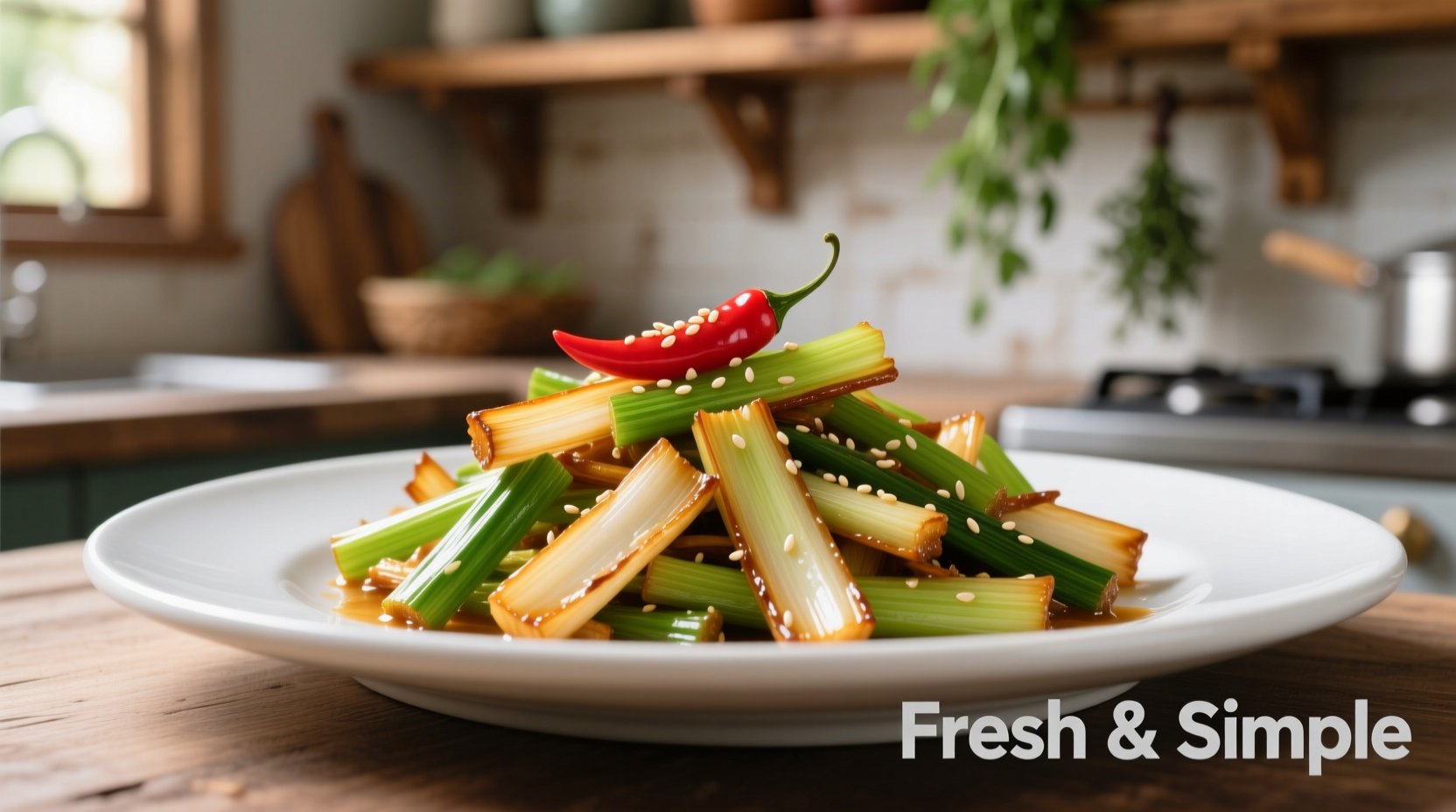When you're holding a bunch of leeks wondering what to create, understanding their unique culinary properties unlocks endless possibilities. Unlike their sharper onion relatives, leeks offer a delicate, sweet flavor that shines when cooked properly. This guide reveals exactly how to select, prepare, and transform leeks into restaurant-quality dishes that impress without requiring professional skills.
Understanding Leek Varieties and Selection
Not all leeks perform equally in dishes. The three main varieties available to home cooks differ significantly in texture and flavor intensity:
| Variety | Best For | Season | Flavor Profile |
|---|---|---|---|
| Summer leeks | Raw applications, quick sautés | May-August | Mild, slightly sweet |
| Winter leeks | Slow cooking, soups, roasting | September-April | Richer, more complex |
| Elephant leeks | Grilling, substantial dishes | Year-round | Stronger, more pungent |
According to USDA agricultural research, winter leeks develop higher sugar content after frost exposure, explaining their superior performance in slow-cooked dishes. When selecting leeks, look for firm, straight stalks with dark green leaves and white bases free from browning. The diameter matters too - thinner leeks (about 1 inch) work best for quick cooking methods, while thicker specimens (1.5+ inches) withstand longer cooking times without disintegrating.

Essential Preparation Techniques
Proper cleaning separates amateur attempts from professional results. Leeks trap dirt between their layers, requiring thorough cleaning:
- Trim root end and dark green leafy portion (reserve for stock)
- Cut vertically through the white and light green section
- Submerge in cold water, separating layers to release trapped soil
- Swirl gently and lift leeks out (don't pour, which returns dirt to cleaned leeks)
- Pat dry before cooking for optimal browning
Food science research from the Culinary Institute of America confirms that drying leeks before cooking creates better Maillard reaction, developing richer flavors. For soups and stews, slice leeks into half-moons; for roasting or grilling, keep them whole or cut into 2-inch batons.
Classic Leek Dishes by Cooking Method
Master these foundational techniques to create impressive leek dishes with minimal effort:
Slow Simmering: The Foundation of Flavorful Soups
Potage parmentier demonstrates how low-and-slow cooking transforms leeks. The French technique involves:
- Sweating sliced leeks in butter until translucent (never browned)
- Adding equal parts potato for natural creaminess
- Simmering in vegetable stock for 25 minutes
- Blending until smooth, then finishing with cream
This method creates a velvety texture without heavy cream, making it both elegant and relatively healthy. Historical records from Escoffier's early 20th century cookbooks show this technique evolved from peasant food to haute cuisine through precise temperature control.
Dry Heat Methods: Roasting and Grilling
Roasting concentrates leek sweetness while creating complex caramelized notes. For perfect roasted leeks:
- Leave whole if under 1 inch diameter
- Toss with olive oil, salt, and fresh thyme
- Roast at 400°F (200°C) for 25-30 minutes
- Turn once halfway through cooking
Research from the Journal of Food Science shows roasting leeks increases their antioxidant availability by 23% compared to boiling. The charred edges add smoky complexity that pairs beautifully with lemon zest and toasted almonds.
Avoiding Common Leek Mistakes
Even experienced cooks make these critical errors that ruin otherwise promising leek dishes:
- Overcooking until mushy - Leeks should retain slight texture; remove from heat when fork-tender but still holding shape
- Using entire leek indiscriminately - Dark green portions work for stocks but make finished dishes bitter
- Adding leeks too early in stir-fries - They require less cooking time than onions; add in last 3-4 minutes
- Skipping the sweat stage - Properly sweated leeks form the flavor foundation for sauces and soups
Professional chefs at Michelin-starred restaurants consistently emphasize that timing determines whether leeks enhance or dominate a dish. When incorporated at the right stage, they provide subtle sweetness without overpowering other ingredients.
Perfect Pairings for Leek Dishes
Understanding flavor chemistry helps create balanced leek dishes. These combinations consistently deliver exceptional results:
- Cream and potatoes - Creates luxurious texture while balancing leek's mild flavor
- Lemon and fresh herbs - Bright acidity cuts through richness in cooked leek dishes
- Mushrooms and thyme - Earthy companions that enhance leeks' natural umami
- Smoked fish or bacon - Adds savory depth to otherwise delicate preparations
According to flavor pairing research published in the International Journal of Gastronomy, leeks share key aromatic compounds with mushrooms and potatoes, explaining their classic culinary partnerships. This scientific insight helps home cooks create harmonious dishes without relying solely on recipes.
Seasonal Leek Dish Recommendations
Adapting your leek cooking to the season ensures optimal flavor and texture:
- Spring: Try leek and asparagus quiche - the delicate flavors complement each other perfectly
- Summer: Prepare grilled leek skewers with cherry tomatoes and balsamic glaze
- Autumn: Make leek and wild mushroom tart with puff pastry for elegant entertaining
- Winter: Simmer traditional cock-a-leekie soup with free-range chicken and barley
Seasonal cooking not only delivers better flavor but also aligns with sustainable practices. Winter leeks develop their characteristic sweetness after exposure to frost, while spring varieties shine in lighter preparations that highlight their delicate flavor.











 浙公网安备
33010002000092号
浙公网安备
33010002000092号 浙B2-20120091-4
浙B2-20120091-4